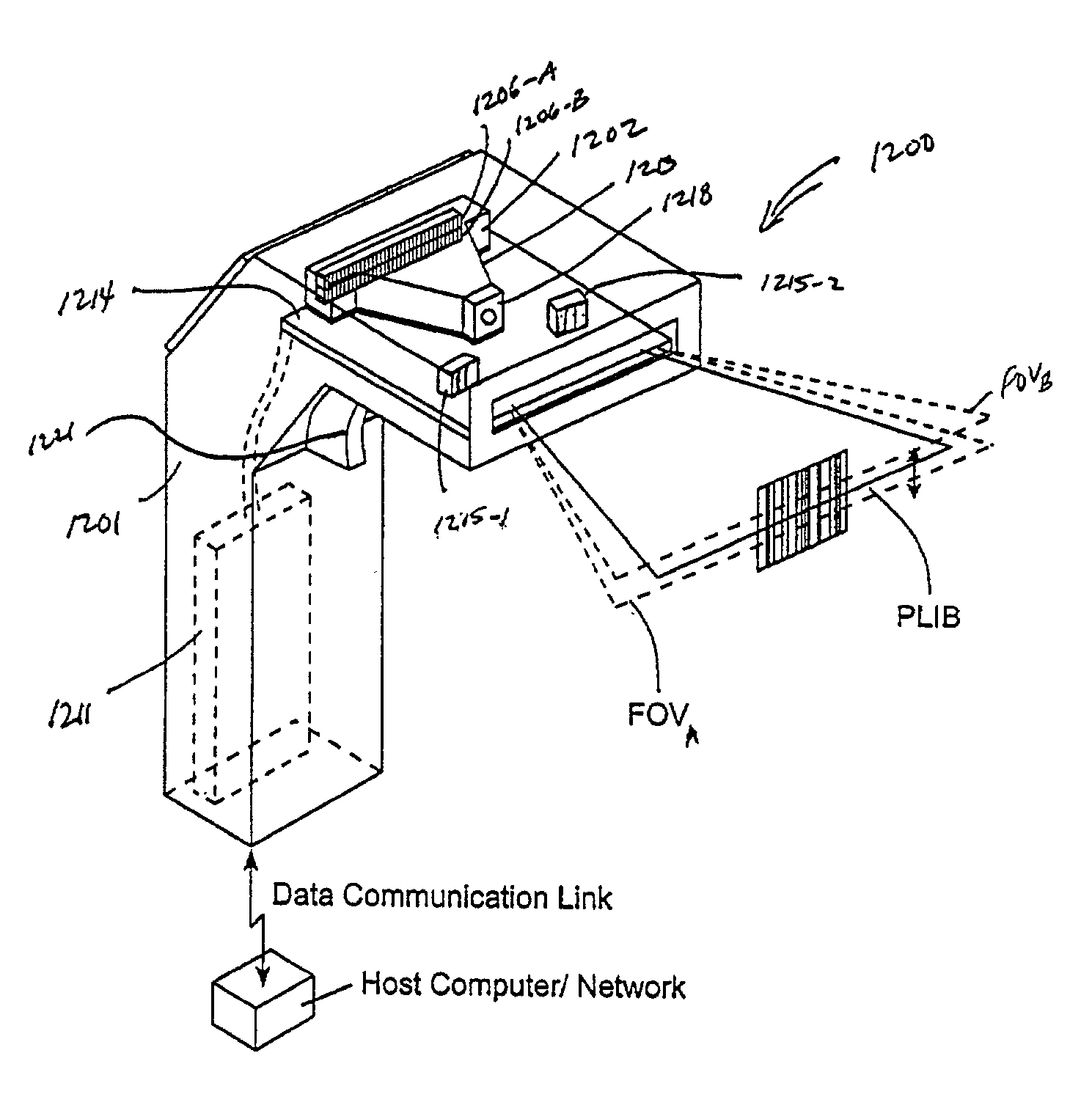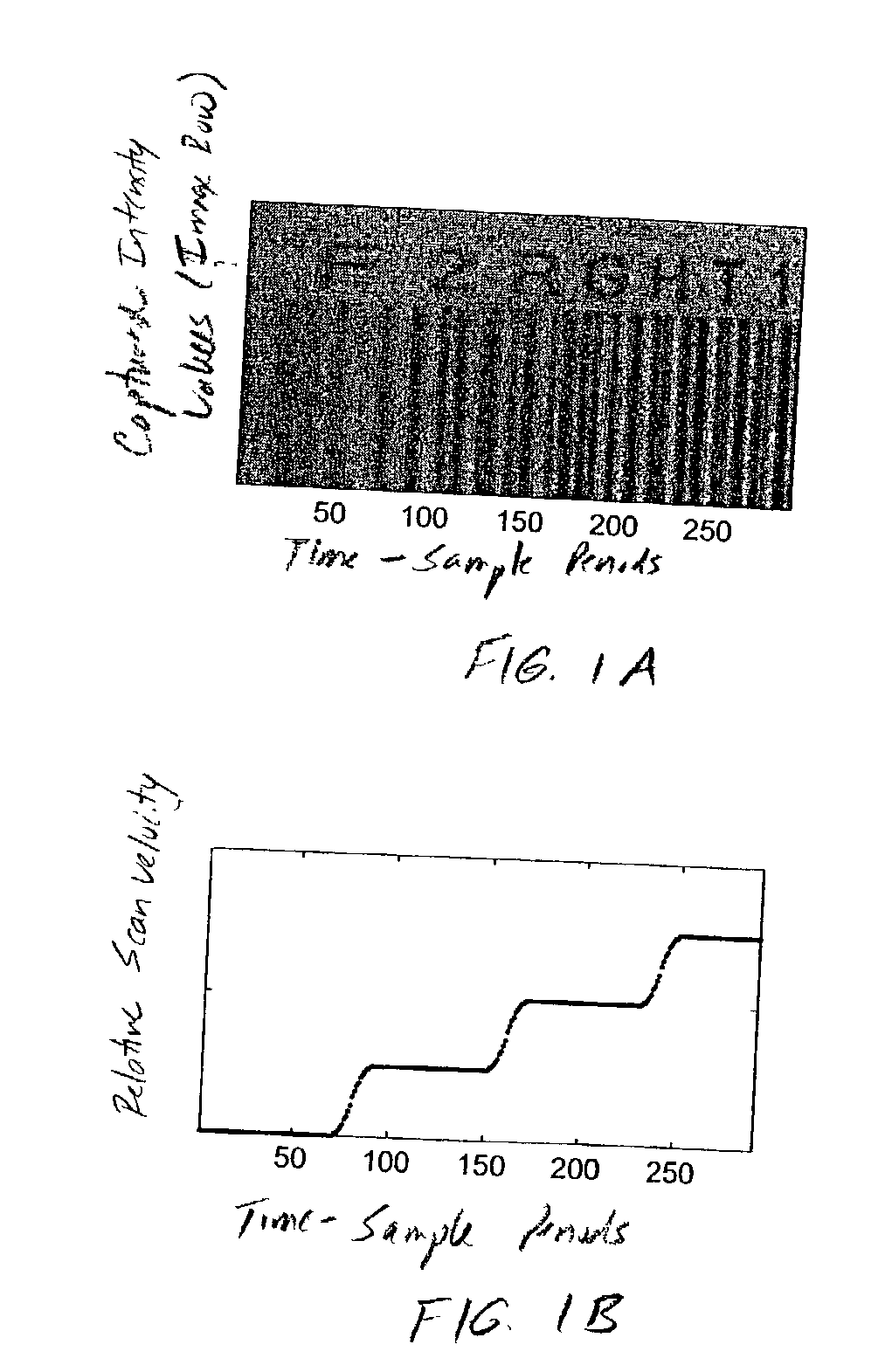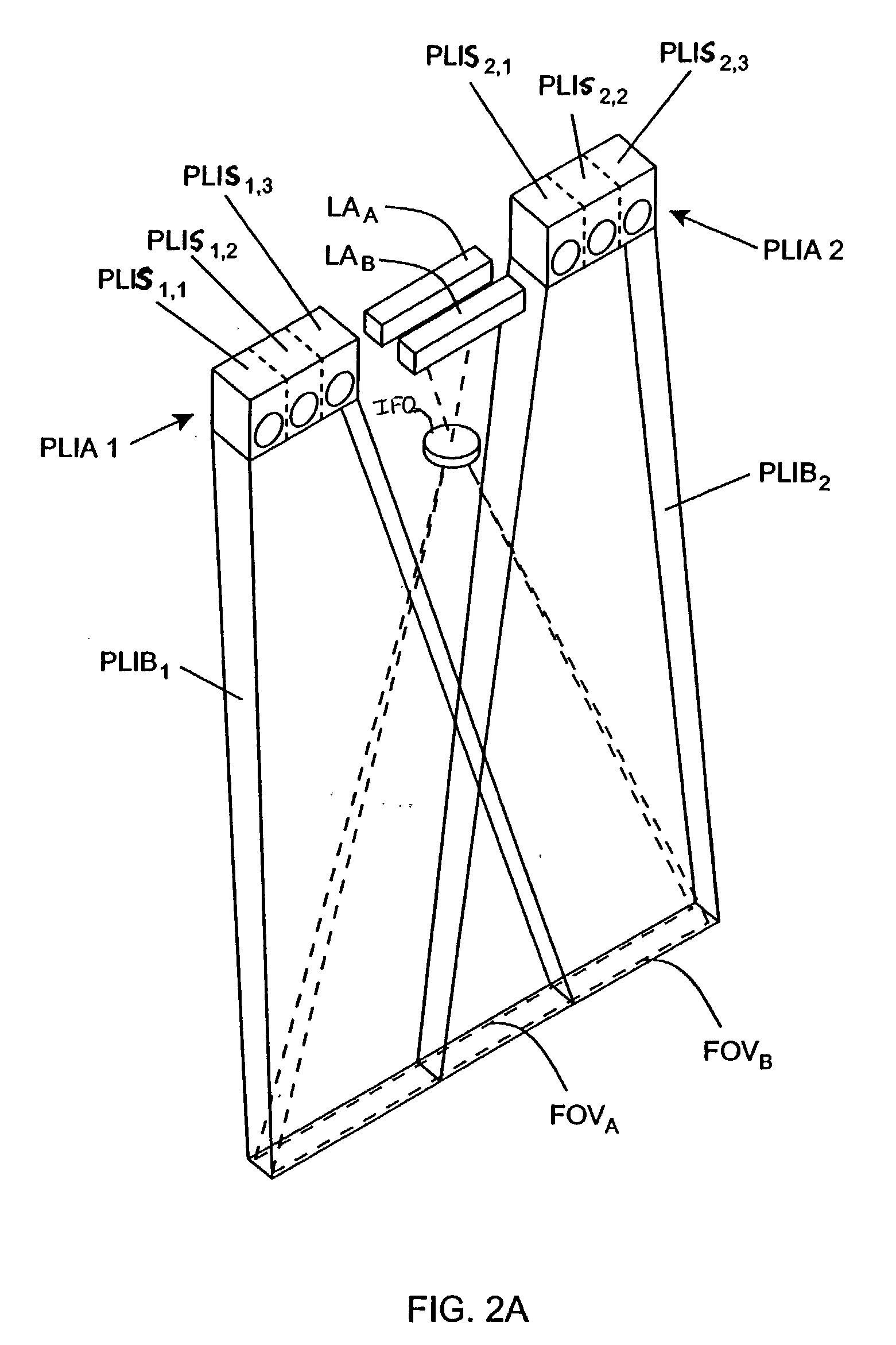Handheld imaging device employing planar light illumination and linear imaging with image-based velocity detection and aspect ratio compensation
a technology of image-based velocity detection and aspect ratio compensation, which is applied in the direction of instruments, sensing record carriers, sensing by electromagnetic radiation, etc., can solve the problems of large percentage of illumination waste, increased cost, size and weight of such scanning devices, and simple waste of output illumination power in the form of heat, so as to reduce speckle noise, cost reduction, and cost
- Summary
- Abstract
- Description
- Claims
- Application Information
AI Technical Summary
Benefits of technology
Problems solved by technology
Method used
Image
Examples
Embodiment Construction
[0149] Referring to the figures in the accompanying Drawings, the various illustrative embodiments of an PLILM-based imaging device in accordance with the present invention will be described in great detail.
[0150] In accordance with the principles of the present invention, a target object (e.g. a bar coded package, textual materials, graphical indicia, etc.) is illuminated by planar light illumination--which is light illumination having substantially-planar spatial distribution along a characteristic propagation direction. In other words, the planar light illumination has a width of illumination (which extends along a transverse direction to the characteristic direction of propagation as best shown in FIG. 2F2) that is much greater than its height of illumination (which extends along a direction orthogonal to the characteristic propagation direction as best shown in FIG. 2F3). The planar light illumination overlaps the field of views (FOVs) of a plurality of linear (1-D) imaging arr...
PUM
 Login to View More
Login to View More Abstract
Description
Claims
Application Information
 Login to View More
Login to View More - R&D
- Intellectual Property
- Life Sciences
- Materials
- Tech Scout
- Unparalleled Data Quality
- Higher Quality Content
- 60% Fewer Hallucinations
Browse by: Latest US Patents, China's latest patents, Technical Efficacy Thesaurus, Application Domain, Technology Topic, Popular Technical Reports.
© 2025 PatSnap. All rights reserved.Legal|Privacy policy|Modern Slavery Act Transparency Statement|Sitemap|About US| Contact US: help@patsnap.com



